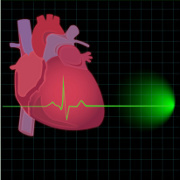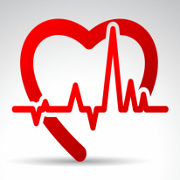Endocardium is the term used to describe the inner lining of the heart chamber and valves. Sometimes, this inner lining can become inflamed or infected causing a condition commonly referred to as endocarditis.
Endocarditis is either infective, often referred to as infective endocarditis, or non-infective or non-bacterial endocarditis. Here, we’ll take a look at some of the symptoms, causes and risks related to endocarditis.
Causes
Endocarditis is caused when bacteria, fungi, or other germs enter the bloodstream and then attack the diseased or damaged areas of the heart. Bacteria or other germs enter the bloodstream from a variety of sources, including poor dental hygiene, gum disease, brushing teeth, or dental procedures that cut the gum.
Sometimes, endocarditis can be caused by the use of contaminated needles used in body piercing and tattoos, or by IV drug users. It’s also possible for bacteria to enter the bloodstream through medical procedures such as the use of a catheter.
Certain diseases, such as sexually transmitted diseases, or inflammatory bowel disease, may also provide an avenue for bacteria to enter the bloodstream and make its way to the heart.
Who is at Risk?
Endocarditis is a condition which generally occurs in those with hearts that are already diseased or damaged. Those with damaged or artificial heart valves, or congenital heart defects are at greater risk of developing endocarditis.
A prior history of endocarditis increases the risk for a second occurrence. Illegal drug use also increases the risk of developing endocarditis. The condition is rarely found in those with a healthy heart.
Endocarditis Symptoms
The symptoms for endocarditis vary from person to person depending on the underlying cause of the infection or whether or not there are any pre-existing heart conditions present. Common endocarditis symptoms include: fever and other flu-like symptoms such as chills, fatigue, aching joints, aching muscles.
Symptoms may also include a new heart murmur, change in an existing heart murmur, shortness of breath, paleness, night sweats, cough, weight loss, swelling in feet, legs, or stomach, blood in urine, and tender spleen.
Some people may develop a condition referred to as Osler’s nodes which is characterized by spots on the fingers which are red and tender. Petechiae, or purple or red spots on the inside of the mouth or in the white area of the eye are also common.
Symptoms may occur suddenly or slowly. Cases where the symptoms develop quickly are generally referred to as acute, as in acute infective endocarditis or acute bacterial endocarditis. Cases which develop slowly are referred to as subacute, as in subacute infective endocarditis or subacute bacterial endocarditis.
If you are at risk for endocarditis and develop symptoms, it’s important to seek medical attention and be evaluated as soon as possible.
Treatments
Endocarditis is generally treated with I.V. antibiotics for two to six weeks while in the hospital. In severe cases, surgery may be required to repair damaged heart valves or diseased heart tissue.
The underlying cause of the endocarditis may also affect the treatment. For example, endocarditis which is caused by fungi is more difficult to treat than endocarditis caused by bacteria. In these cases, surgery is frequently required to correct the condition.
Complications
Endocarditis can be quite serious and potentially life threatening and may lead to stroke, damage to other vital organs and tissues, abscesses in other parts of the body, abnormal heart beats, and even heart failure. Heart valves may be destroyed requiring surgery to repair.
Left untreated, endocarditis can be fatal so it’s important to seek medical attention as soon as symptoms present.
Sources:
Endocarditis. The Mayo Clinic. 11 Apr 2011. http://www.mayoclinic.com/health/endocarditis/DS00409
Endocarditis. National Heart Lung and Blood Institute. 01 Oct 2010. http://www.nhlbi.nih.gov/health/health-topics/topics/endo
Subacute Bacterial Endocarditis. 09 Oct 2011. Health Central. http://www.healthcentral.com/encyclopedia/408/315.html
Reviewed October 10, 2011
by Michele Blacksberg RN
Edited by Jody Smith






Add a CommentComments
There are no comments yet. Be the first one and get the conversation started!